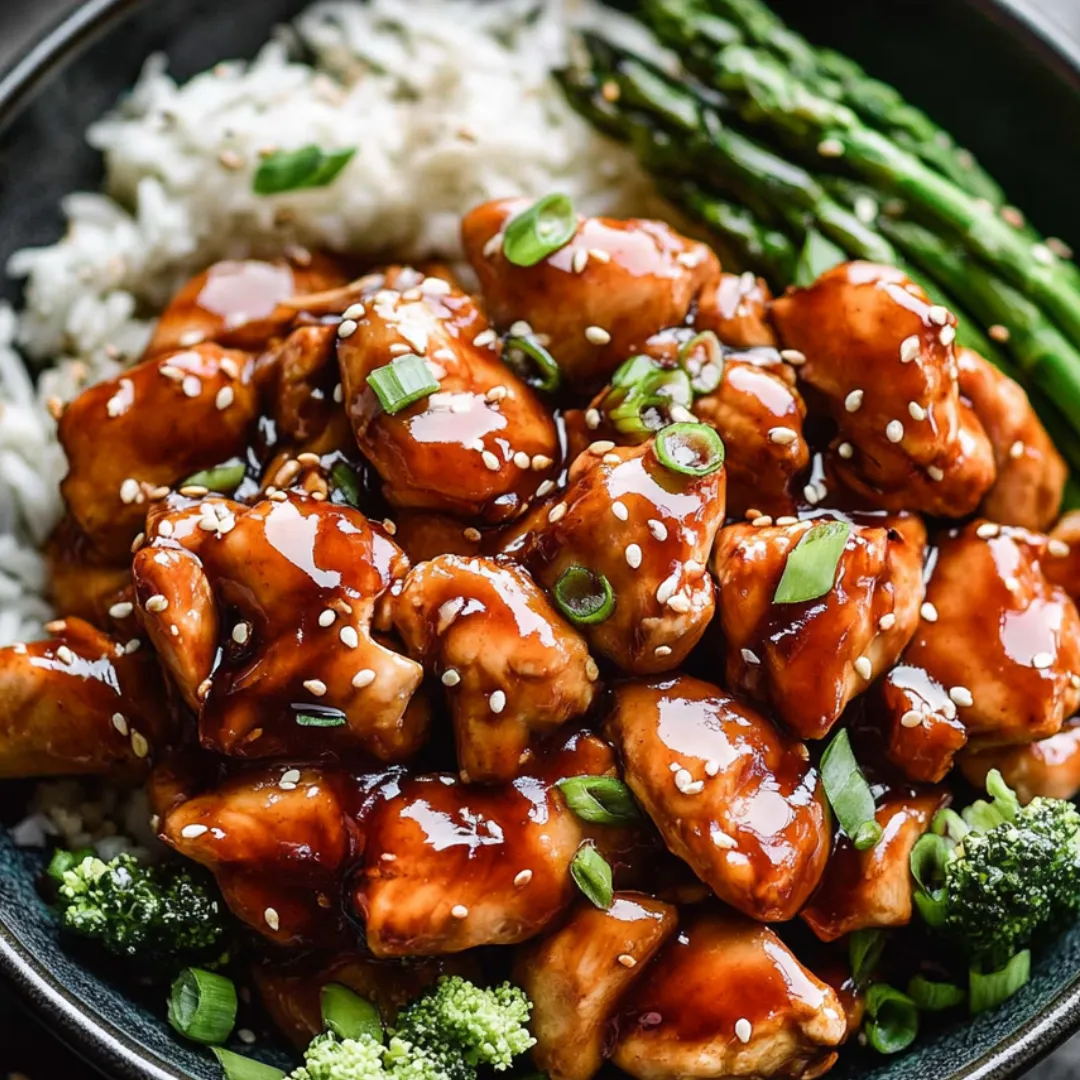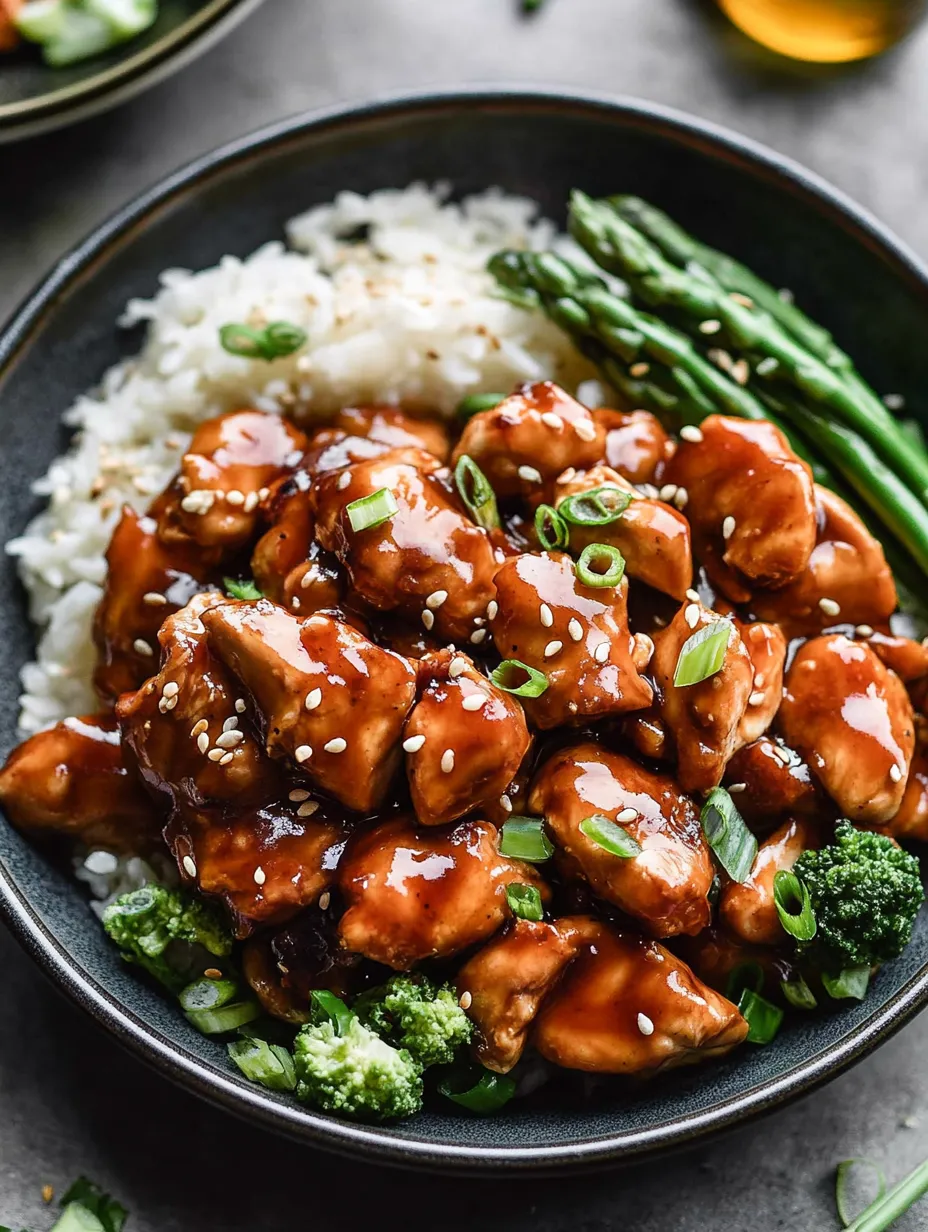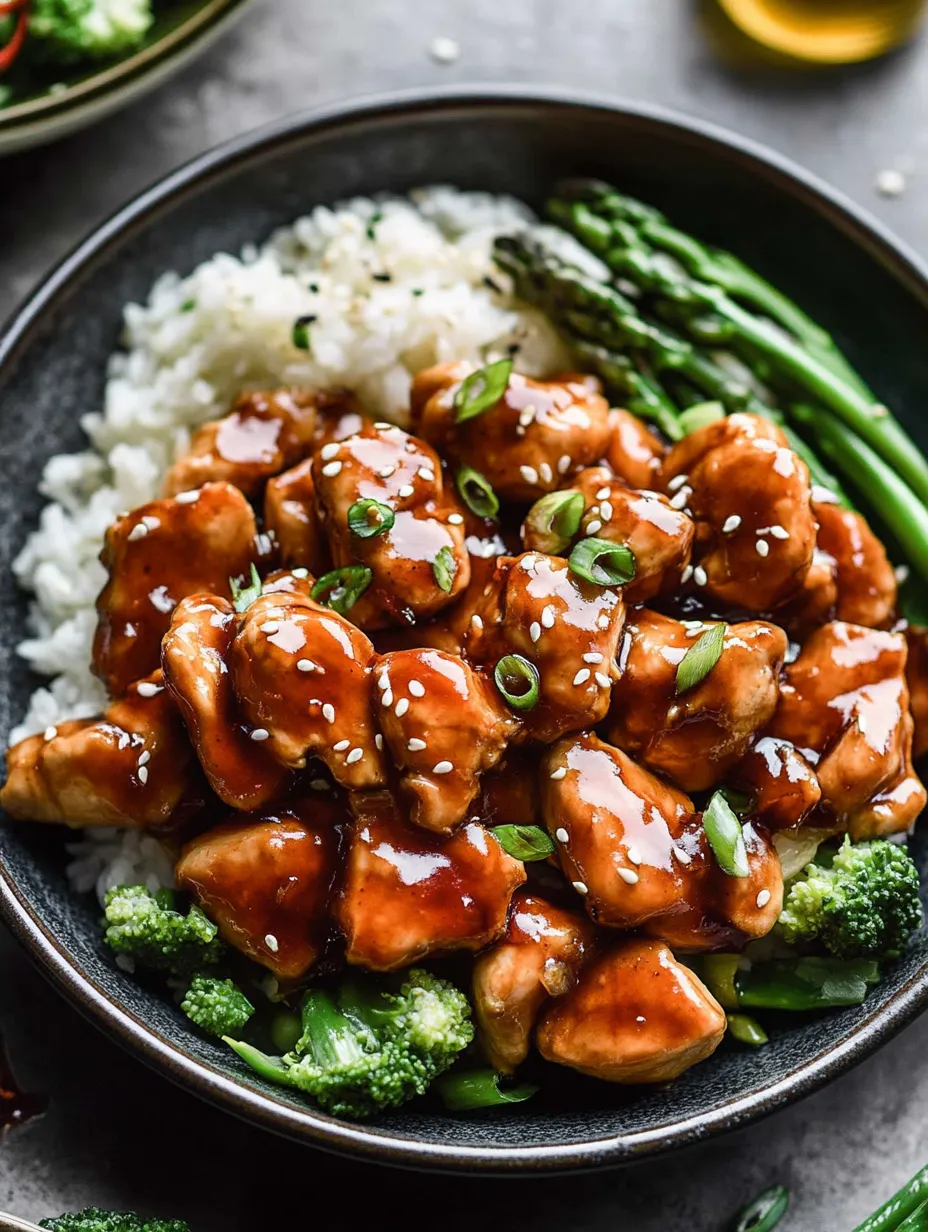 Pin it
Pin it
This 20-minute chicken teriyaki recipe transformed my weeknight dinner routine with its perfectly balanced sweet and savory flavors. The sticky, glossy sauce coats each piece of chicken beautifully, creating a restaurant-quality meal that comes together faster than delivery.
This recipe became my absolute lifesaver during a particularly busy month when I was working late. My family now requests it weekly, and I love how I can switch up the vegetables based on what's in season.
Ingredients
- Boneless skinless chicken thighs or breasts: Thighs provide more flavor and moisture, but breasts work perfectly for a leaner option
- Low sodium soy sauce: Creates the savory foundation. Low sodium allows you to control the saltiness
- Cornstarch: The secret to achieving that thick, glossy restaurant quality sauce
- Honey: Provides natural sweetness and helps create the sticky glaze
- Rice vinegar: Adds a subtle tang that balances the sweetness
- Fresh garlic and ginger: Always use fresh for authentic flavor. They create aromatic depth that dried versions cannot match
- Red pepper flakes: Adds a gentle heat that elevates the entire dish
- Green onions: Provides color, freshness and a mild onion flavor
- Neutral cooking oil: Choose one with a high smoke point for proper browning
- Brown rice: The nutty flavor complements the teriyaki perfectly
Step-by-Step Instructions
- Marinate the Chicken:
- Toss chicken pieces with soy sauce, salt, pepper, and cornstarch. This quick marinade not only seasons the meat but the cornstarch creates a protective coating that seals in moisture and helps the chicken brown beautifully. Let it sit while you prepare the sauce.
- Prepare the Teriyaki Sauce:
- Whisk together water, honey, rice vinegar, fresh garlic, ginger, red pepper flakes, remaining soy sauce and cornstarch until smooth. This homemade sauce develops infinitely more flavor than bottled versions. Make sure there are no cornstarch lumps for a silky smooth finish.
- Brown the Chicken:
- Heat oil in a large nonstick skillet or wok until shimmering. Add chicken in a single layer without overcrowding, cooking undisturbed for 2-3 minutes until deeply golden. This patience creates the caramelization that builds incredible flavor. Flip and continue cooking another 2-3 minutes until chicken is cooked through with a beautiful sear.
- Add the Sauce:
- Pour the prepared sauce over the cooked chicken and let it simmer. Watch as the sauce transforms before your eyes, thickening and becoming gloriously sticky and glossy within about 1-2 minutes. Keep stirring to ensure every piece of chicken gets evenly coated.
- Finish and Serve:
- Stir in most of the green onions, reserving some for garnish. Serve immediately over hot rice with steamed vegetables of your choice for a complete meal. The contrast of the rich, savory chicken against the fresh vegetables creates the perfect balance.
 Pin it
Pin it
I discovered the magic of fresh ginger in this recipe after years of using the powdered version. That first bite with real ginger was revelatory. My grandmother always said good teriyaki needs fresh ginger, and now I understand why. The aromatic, slightly spicy flavor simply cannot be replicated.
Storage and Make-Ahead Tips
This chicken teriyaki actually tastes even better the next day as the flavors continue to develop. Store leftovers in airtight containers in the refrigerator for up to 4 days. For meal prep, portion the chicken with rice and vegetables into individual containers for grab-and-go lunches.
The sauce tends to thicken considerably when chilled. When reheating, add a small splash of water if needed to restore the original consistency. Microwave gently or reheat in a skillet over medium-low heat until just warmed through to prevent the chicken from becoming tough.
For longer storage, freeze portions for up to 3 months. Thaw overnight in the refrigerator before reheating for best texture and flavor.
Customization Options
The beauty of this recipe lies in its flexibility. Try swapping the honey for brown sugar or maple syrup for a different sweetness profile. For a more complex flavor, add a tablespoon of mirin or a teaspoon of sesame oil to the sauce.
The vegetable possibilities are endless. Beyond the suggested stir-fry mix, try snow peas, bell peppers, baby corn, water chestnuts, or bok choy. For a low-carb version, serve over cauliflower rice or with extra vegetables instead of rice.
For added texture and visual appeal, sprinkle toasted sesame seeds or crushed peanuts over the finished dish. A drizzle of sriracha adds wonderful heat for those who enjoy spicier food.
 Pin it
Pin it
The Cultural Context
Teriyaki originated in Japan, where the cooking technique involves grilling or broiling foods with a glaze of soy sauce, mirin, and sugar. The word comes from "teri" meaning luster and "yaki" meaning grilled or broiled, referring to the shine of the glaze.
The American version we enjoy today typically features the thickened sauce rather than just the glaze. This adaptation became popular in the United States in the 1960s and has evolved into one of the most beloved Asian-inspired dishes in American homes.
Frequently Asked Questions
- → Can I use chicken breasts instead of thighs?
Yes, both chicken breasts and thighs work well in this dish. Adjust cooking time slightly to ensure the chicken stays tender.
- → What side dishes go well with this?
Serve it over rice and pair it with steamed vegetables like broccoli, carrots, or snap peas for a complete meal.
- → Can I make this sauce thicker?
Yes, increase the amount of cornstarch in the sauce and let it simmer longer to achieve a thicker consistency.
- → Is this dish spicy?
The sauce has a mild heat from red pepper flakes. You can adjust the amount to suit your spice tolerance.
- → How do I reheat leftovers?
Reheat in a skillet over medium-low heat or in the microwave until warmed through. Add a splash of water if the sauce thickens too much.
